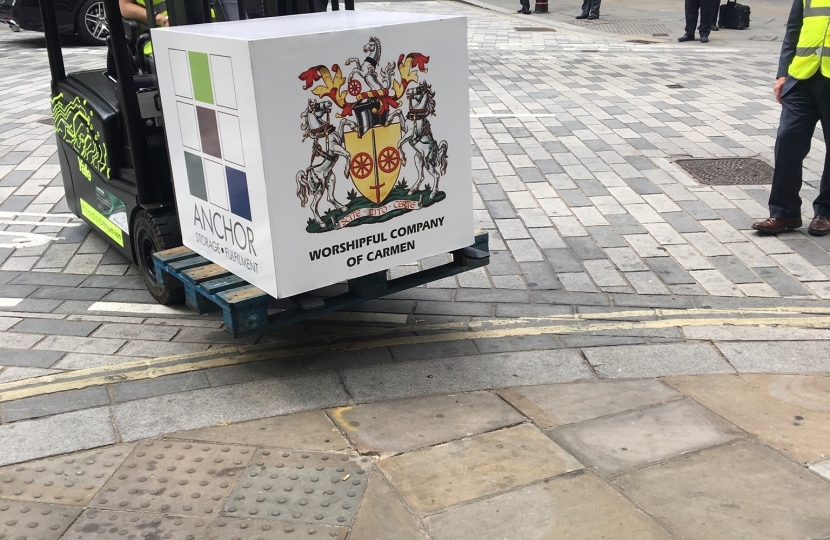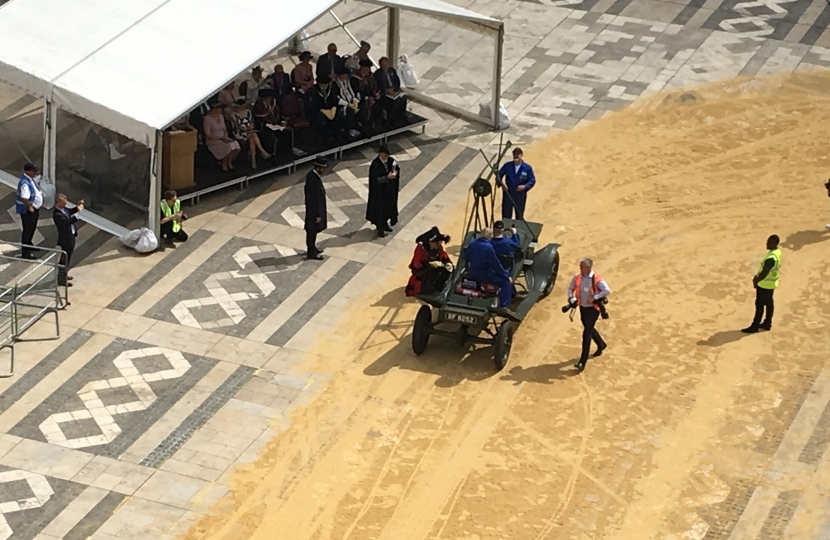Today was the return of the wonderfully colourful cart marking event, where all manner of vehicles present themselves to the Lord Mayor.
The Corporation of the City of London has exercised its rights over carts and carriers since its inception, for transport is the lifeblood of commerce, and the City was ever the hub of the nation’s prosperity.
A Carman fellowship existed in 1277 and the City has regulated the trade since the 16th century, when cartage was costly, sewage was uncollected and the City needed help. The Carmen obliged. They formed ‘the Fraternyte of Seynt Katryne the Virgyn and Marter of Carters’ in 1517, and undertook to ‘clense, purge and kepe clene’ the streets, and carry goods at a reasonable price. They acquired 'carrooms' or stands to ply for hire, effectively licences to trade. But Woodmongers also had carts, and the City granted them licences too.
The Carmen sought protection – they ceded control to Christ’s Hospital and paid fees to the School, though the number of carts and ‘carrs’ plying for hire within the City was limited by Common Council. But by 1605 they had fallen out and the Woodmongers secured a charter, which regulated 'carrooms' and Carmen until 1665, when Christ’s Hospital took over again. It was agreed that all licensed vehicles should be marked with the City’s arms on the shafts and numbered on a brass plate. In 1681 there were 420 licensed carts; in 1835, 600.
Today over 330 years later we carry on the tradition.


